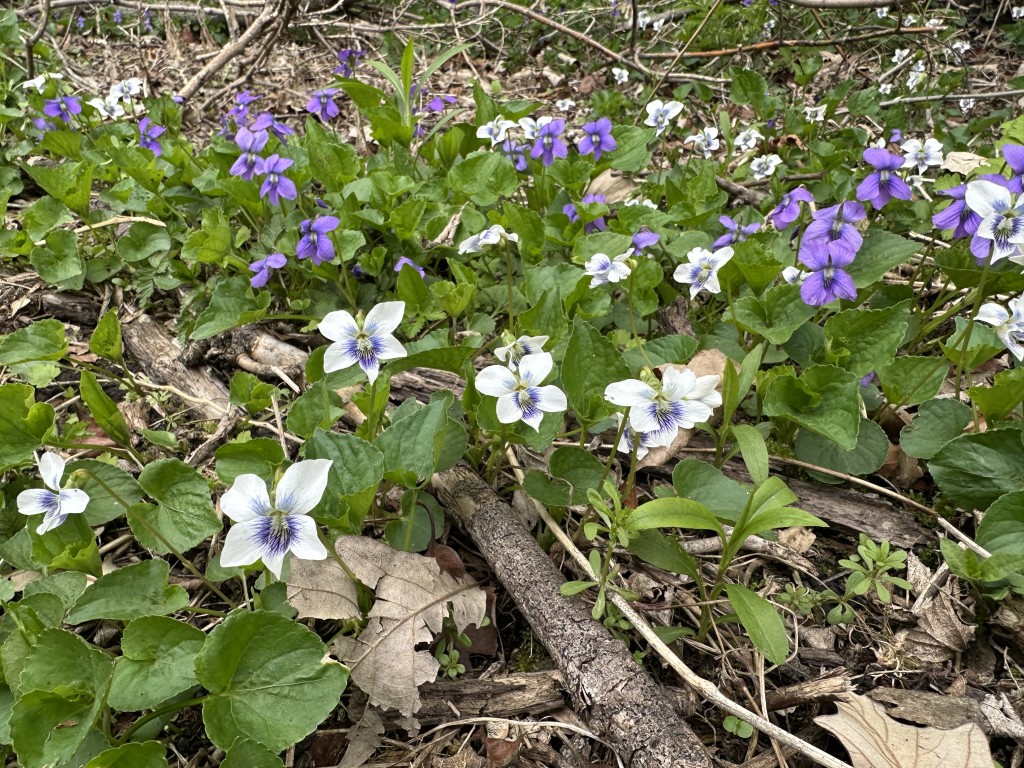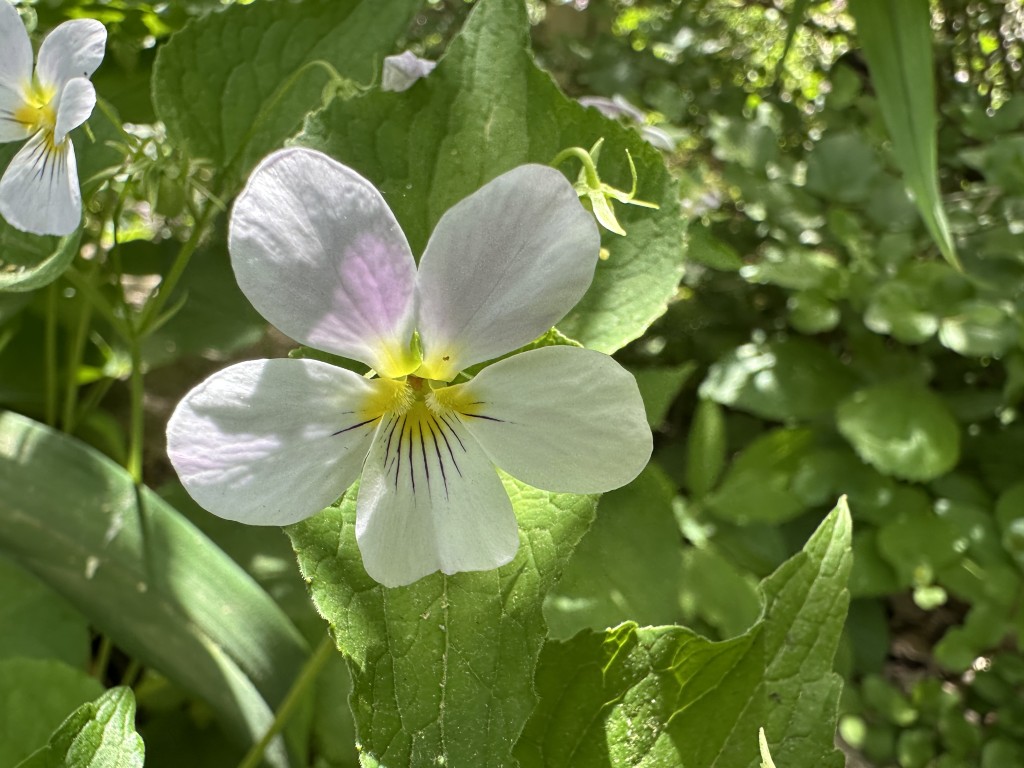My neighbor has shifted her gardening focus to almost entirely natives and woodland plants for pollinators. As a result, I often find interesting volunteer plants popping up in my yard.

When I saw the leaves of these plants appear under some of my daylilies in early May, I thought they were Wood Violets. Wood Violets are native to Wisconsin and also our official state flower. They appear regularly in our lawn.
Here are some Wood Violets I photographed on a nature trail in our city this spring. The flowers are usually purple, lavender or white with purple veins.

By the time my new mystery plants finally bloomed, they were almost a foot tall and had much larger flowers than a Wood Violet. And those flowers were white with yellow centers.
When I’m hiking in the woods, I use the Seek app by iNaturalist to help me ID plants and flowers. So I used Seek on these pretty little white flowers and learned they are Canada Violets.

The giveaway is the purple color on the backs of the petals.

Canada Violets thrive in moist forests and grow up to a foot tall.
I did a little more research, and they do self-seed. That’s a trait that always makes me nervous, but Canada Violets supposedly naturalize slowly and are well-behaved in woodland gardens.

Ultimately I decided against pulling out these eye-catching little volunteers because they are beneficial for some species of bees. And they are a host plant for caterpillars of the Great Spangled Fritillary butterfly.

